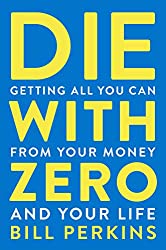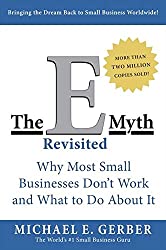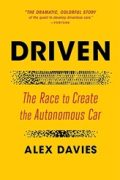
Rating: 7.8/10.
The Meat Racket: The Secret Takeover of America’s Food Business by Christopher Leonard
Book about the American meat production industry, focusing on Tyson Foods, a major player in the field. Since the Great Depression, the industry has seen significant consolidation and vertical integration, with Tyson emerging as a dominant yet relatively unknown player. While Tyson has greatly optimized meat production, proving to be quite profitable, it has led many rural areas and farmers into poverty.
The first chapter introduces the life of Jerry Yandel, who has spent his entire life farming chickens. One day, he began to notice many of his chickens mysteriously falling ill and dying; this predicament was largely not his fault but rather that of Tyson, which supplies both the chicks and the feed, leaving Yandel with little control. Despite this, Tyson avoids any responsibility, and as a result, Yandel eventually loses his farm and goes bankrupt. Tyson operates on a contract model, controlling every aspect of the meat production process and assigning only the task of raising the chickens to contract farmers, as this part demands the most human attention; they deliver the chicks and feed to the farms and, a few weeks later, collect the grown chickens, compensating the farmer. There’s a widespread belief that Tyson deliberately provides low-quality chickens to farmers who displease them, such as those who complain, leading to swift financial ruin for these farmers. The farmers have little choice due to the the secretive nature of the industry and Tyson’s regional monopoly leaving them nobody else to trade with.
John Tyson, the founder of the company, initially started by delivering chickens to northern cities in a truck during the Great Depression. He invented some financial mechanisms to provide a steadier income for chicken farmers and expanded his business by purchasing hatcheries. In the 1950s, his son, Don Tyson, who was more ambitious and willing to take risks to grow the business, built the first slaughterhouse. Over the next few decades, Tyson further improved its efficiency, which proved crucial during economic downturns when the market price for chicken dropped significantly. Through its efficiency, Tyson was able to outlast its competitors and ended up buying many of them in the 1960s, achieving not only vertical integration in handling all parts of the process but also acquiring a monopoly in many regions. It attained this efficiency by exploiting numerous texts and legal loopholes to circumvent regulations. Tyson eventually realized that the most unprofitable part was the job of raising the chickens, as it required a substantial amount of human attention that regular employees couldn’t provide, leading to the current system of contract farmers. These farmers have a skin in the game; they must raise the chickens properly and efficiently to pay off their mortgages on the substantial investments they have made in farming equipment, or else they risk bankruptcy.
Tyson pays all of its contract farmers based on a sort of “tournament” system, where farmers earn more money if they are more efficient at converting chicken feed into meat. This system is structured so that only a proportion of the farmers will earn enough to pay their mortgages, and those at the bottom of the list will be forced into bankruptcy, even if everyone is performing well. This inevitably means there will always be farmers ranked near the bottom. This system forces farmers to compete against each other, and since there is very little a farmer can do to significantly improve efficiency, the main strategy they can adopt is to take on considerable debt to upgrade their equipment to newer, more efficient models. Many American farmers have been replaced by Laotian immigrants, who were willing to live more frugally than Americans and were harder working. The immigrants initially succeeded, but eventually they too started to rank at the bottom after newer immigrants got better farms with newer equipment.
Although chicken was the first animal to be fully optimized in the contract farming model, Tyson soon began experimenting with pigs and cattle in the 1970s. Adapting pigs to factory farming conditions required some technological innovation, as pigs are biologically quite different from chickens, being more similar to humans. However, through technological advancements, pigs were eventually farmed in a factory-like setting similar to chickens, leading Tyson to acquire IBP, one of the leading pork producers.
Tyson primarily gained market share during economic downturns. In the 1960s and 1980s, the market price for various meats dropped to all-time lows, forcing many smaller, less efficient producers out of the market. This led to rapid consolidation, often leaving only one buyer in each region. Previously, there was an open market for pork and beef, but this gradually disappeared as almost all live pigs and cattle came to be bought by a single meat producer in each region, leaving farmers with no choice over whom to sell to and, consequently, no ability to make a profit. By 2008, during the financial crash and a reduced demand for meat, Tyson was able to unilaterally cut chicken production across most of the country from one central office, leaving the financial burden on the farmers.
Concerns about antitrust arose during the Obama Administration, leading to efforts to grant more legal rights to contract farmers and regulate the industry. These efforts included proposals for a guaranteed base pay to replace the tournament system, which pits farmers against each other. However, large meat-producing corporations, equipped with significant legal and political resources for lobbying, successfully opposed these initiatives. As a result, all proposed bills succumbed to the lobbying pressure and failed to pass. This situation remained unchanged at the time of the book’s writing, illustrating how Tyson has left many rural communities in poverty, even as the company continues to profit.
Overall, this book provides an insightful economic analysis of the harsh realities of the agriculture industry in America. It narrates how the capitalist system drove the most efficient companies to succeed and acquire smaller competitors, resulting in them now having unchecked power in the industry. The book is somewhat depressing, as it offers no indication that the situation will improve. It presents the bitter truth that as long as consumers demand meat at the lowest price per pound, and in a legal landscape rife with lobbying and lack of regulation, only the largest and most exploitative companies can thrive.



